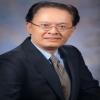Editorial Board
 |
Prof. Edward K.L. Chan, Ph.D. |
|
Biography : Dr. Edward K.L. Chan obtained his Bachelor in Biochemistry from the University of British Columbia, M.Sc. in Clinical Chemistry and Ph.D. in Medical Science and Immunopathology from the University of Calgary, respectively. It was during his postdoctoral training in the laboratory of Professor Eng M. Tan at the Scripps Research Institute, La Jolla, California, that he developed lifelong interests in the biological significance of autoantibodies in patients with systemic rheumatic diseases and cancers. His early work focused on the study of human autoantibodies and autoantigens in systemic lupus erythematosus and Sjögren’s syndrome including the characterization of SS-B/La and the initial identification and cloning of the Ro52/TRIM21 autoantigen. His laboratory has been highly successful in using unique autoimmune antibodies as probes to identify and clone a number of interesting macromolecular self-antigens. These include the ribosomal RNA transcription factor NOR90/hUBF localized to the nucleolar organizer region on mitotic chromosomes; p80-coilin, the primary marker for the Cajal body; a coiled-coil-rich protein family of Golgi autoantigens known as golgins; and GW182, a marker protein for cytoplasmic foci GW bodies. In 2002, Dr. Chan moved to the University of Florida, Gainesville, FL, as Professor in Department of Oral Biology and Department of Anatomy and Cell Biology. Dr. Chan’s research interests continue in autoantigens and autoantibodies. |
|
| Research Interest : Professor Chan’s lab has been highly successful in using autoimmune antibodies to identify and clone a number of interesting self-antigens. These include SS-B/La; Ro52/TRIM21; the ribosomal RNA transcription factor NOR90/hUBF; p80-coilin of the Cajal body; coiled-coil-rich Golgi proteins known as golgins; and GW182, a marker for cytoplasmic foci GW bodies. A new research area is the identification of novel rod/ring structures that are targets of autoantibodies in patients with hepatitis C infection and undergone interferon/ribavirin therapy. These structures are observed in conditions requiring increased GTP biosynthesis in all mammalian cells examined to date. His lab has also published extensively in microRNA function in innate immunity, autoimmune diseases, and oral cancer. |
|
QUICK LINKS
- SUBMIT MANUSCRIPT
- RECOMMEND THE JOURNAL
-
SUBSCRIBE FOR ALERTS
RELATED JOURNALS
- Journal of Oral Health and Dentistry (ISSN: 2638-499X)
- Archive of Obstetrics Gynecology and Reproductive Medicine (ISSN:2640-2297)
- Journal of Otolaryngology and Neurotology Research(ISSN:2641-6956)
- Journal of Allergy Research (ISSN:2642-326X)
- Journal of Nursing and Occupational Health (ISSN: 2640-0845)
- International Journal of Medical and Clinical Imaging (ISSN:2573-1084)
- Advance Research on Endocrinology and Metabolism (ISSN: 2689-8209)


